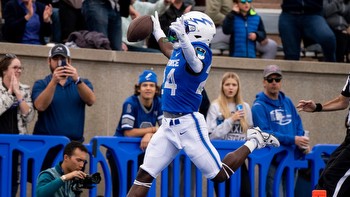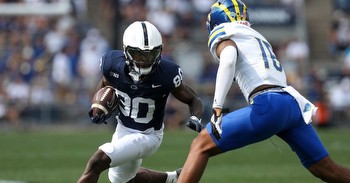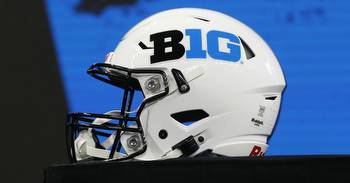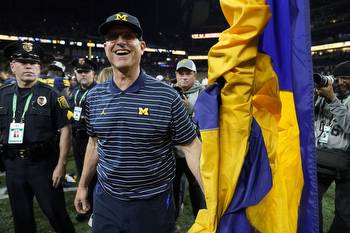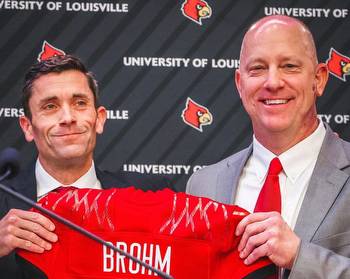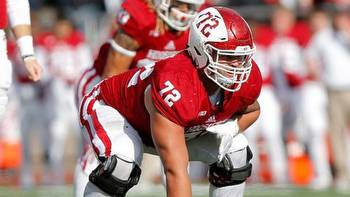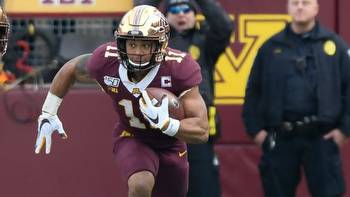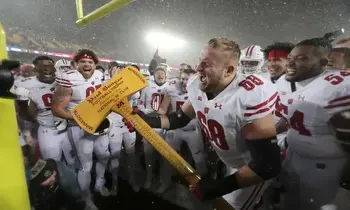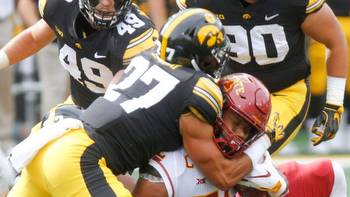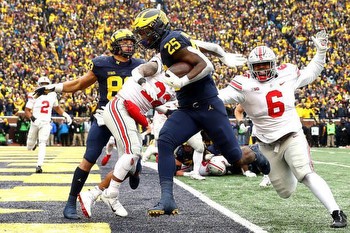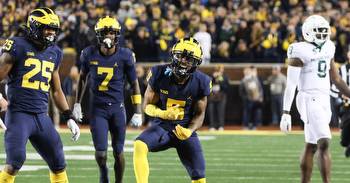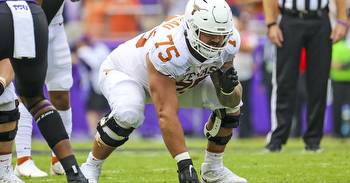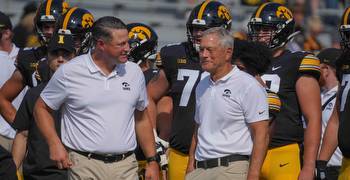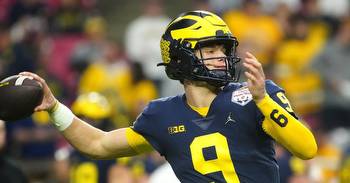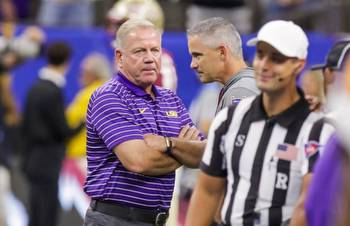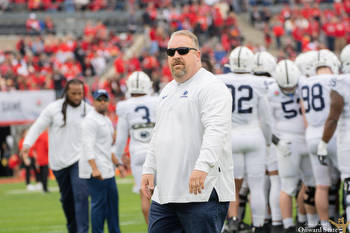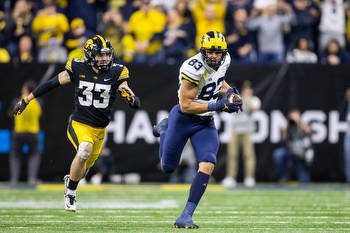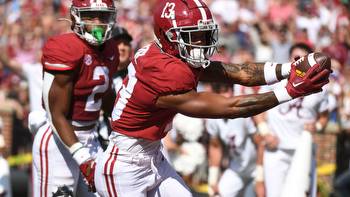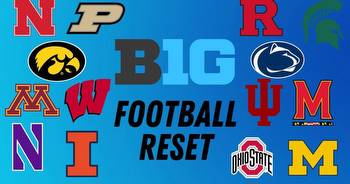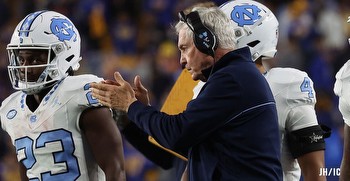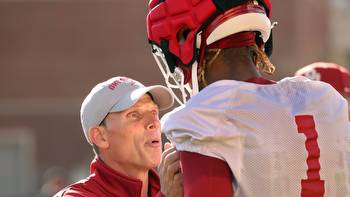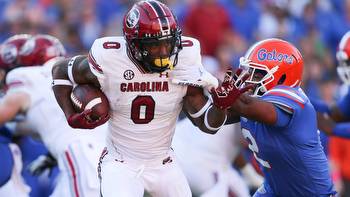Pre-Spring Big Ten Football Transfer Portal Rankings: Part 3
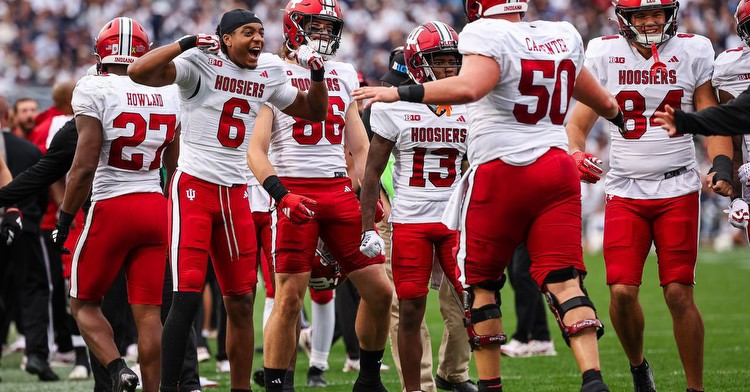
Welcome to the final part of our countdown of every team in the Big Ten and how they fared in the portal so far this offseason. If you missed the previous parts then I recommend you go back and read them here: Part 1 (18-13) and methodology; Part 2 (12-7). Otherwise, let’s dive right into it.
6. Rutgers Scarlet Knights, +140.6 points
Additions: 5 with average grade of 52.9; Highest: QB Athan Kaliakmanis (from Minnesota), 81 points
Departures: 12 with average grade of 31.0; Highest: RB Aaron Young (to Old Dominion), 62 points
This is what we call a utilitarian use of the portal. They didn’t bring many players in but the ones they did all fill holes. That starts at quarterback where they bring in the starter from conference-mate Minnesota. It’s debatable whether that’s a great thing as Kaliakmanis has started 17 games over the past 2 seasons and thrown 17 TDs against 15 TDs on 6.9 YPA. But his receivers didn’t do him any favors as his drop rate was 2.5x higher than UW’s last year. Good thing then one of the other additions is his younger brother who plays WR.
Beyond that you have another receiver who was one of the best in the FCS last year, Dymere Miller from Monmouth, who had nearly 1,300 yards plus 9 TDs at that level. They also added a backup defensive tackle from Florida State to solidify their depth there and brought in a long snapper to fill that hole.
The losses were generally minimal. None of the 12 departing players committed to another power conference school which suggests that Rutgers essentially cut loose a lot of players that didn’t figure to play very much for them in the next few years. Only two of them played more than 100 snaps last year and none of them played 250+.
5. Oregon Ducks, +147.0 points
Additions: 11 with average grade of 69.3; Highest: QB Dillon Gabriel (from Oklahoma), 90.6
Departures: 12 with average grade of 54.0; Highest: CB Trikweze Bridges (to Florida), 78.5
There’s no doubt that Oregon will add at least one more major piece in the spring portal period but the odds are that they drop down a few spots when we revisit this over the summer. That’s because Oregon is already many scholarships over the limit and are going to need at least 6 players to retire or enter the portal just to get back to 85 let alone add more portal talent.
The Ducks definitely lost some promising players but it’s reasonable to say that they can fairly replace everyone that departs at least in the short-term. No one heading out played 300 snaps for the Ducks last season, the most was backup tight end Casey Kelly at 268 (headed to East Carolina). Three members of the secondary who all played at least 100 snaps last year depart which hurts their depth there. As does former heir apparent at QB Ty Thompson who will try to start for Tulane next year. But no one who projected as a surefire starter is gone.
Once again though, Oregon’s NIL budget means they put together a killer transfer class. If you round up then the Ducks added 10 players that had a transfer grade of a level that suggests a likely power conference starter. That starts at the quarterback position where they import Oklahoma’s Dillon Gabriel who should put up some of the biggest numbers in the country replacing Bo Nix. His backup will be former 5-star sophomore Dante Moore coming in after an unsuccessful first season at UCLA under Chip Kelly.
Those portal losses in the secondary (plus the draft entry of Khyree Jackson) meant the Ducks also put a ton of resources into rebuilding the back half of the defense. Husky fans are well aware of the Arnold-ian decision making of Jabbar Muhammad who will be one of the best corners in the country. He’s joined by UTSA star corner Kameryn Alexander (71 points), Duke S Brandon Johnson (74 points), and Kansas State S Kobe Savage (59.8 points). Expect all to play significant snaps.
Then you have an experienced offensive line starter from Indiana in Matthew Bedford (69 points). Plus skill position additions of former 5-star receiver Evan Stewart from Texas A&M (90 points) and D3 All-American Jay Harris from Northwest Missouri State. To top it all off? They also stole Oregon State’s kicker, the perfectly named Atticus Sappington.
4. Nebraska Cornhuskers, +166.8 points
Additions: 6 with average grade of 68.4; Highest: OL Micah Mazzcua (from Florida), 80 points
Departures: 6 with average grade of 40.6; Highest: QB Jeff Sims (Uncommitted), 69 points
This one falls much more into the Rutgers category than Oregon or the rest of the teams in part three. Nebraska had a rough first season under Matt Rhule but it looks like the players still believe for the most part. No one who played at least 150 snaps last year has entered the portal so far. The Cornhuskers do lose a pair of quarterbacks including their opening game starter last year but they have the top-ranked QB recruit in the country coming in to smooth over that roster hole.
There aren’t any superstars coming to Nebraska his year but they do bring in 3 players with between a 77-80 transfer grade who project as instant starters and another 3 players with a grade over 50 who should at least be instant depth guys. The offense got most of the reinforcements with 2-year starting OL Micah Mazzcua, 2-year starting WR Jahmal Banks from Wake Forest, and former starting WR Isaiah Neyor from Texas. You can also throw in 4-star RB Dante Dowdell who transferred out from Oregon after just one season. The other defensive ads are a starting linebacker from Syracuse and a cornerback making the jump up from D3.
3. Purdue Boilermakers, +170.7 points
Additions: 16 with average grade of 54.9; Highest: CB Nyland Green (from Georgia), 73 points
Departures: 26 with average grade of 41.0; Highest: ED Nic Scourton (to Texas A&M), 92 points
Purdue is another team that benefits heavily by my new methodology. They would’ve been 11th if I hadn’t factored in replacements for the extra players that they lost but instead vault up to 3rd. This is probably the placement here that I disagree with the most.
It’s not as if Purdue didn’t add any good players. But their highest incoming transfer, CB Nyland Green from Georgia, has played fewer than 150 career snaps. Granted, he was a high four-star recruit and for two seasons was playing behind essentially only high draft picks but he’s definitely not a proven entity. Six players project as instant starters but there’s no one that looks very likely to make an all-conference team without a massive breakout.
But they get on the list because there are 13 players that left with a transfer grade below 40 which generally means they shouldn’t be expected to contribute on a power conference team. Replacing those with a solid recruiting class means that moving forward the bottom half of the Boilermaker roster should be improved. Is that worth it given the changes at the top?
Purdue lost my #5 overall player in Nic Scourton who just had a ridiculous breakout sophomore year with 42 QB pressures and now heads to the SEC. They also lost almost 2,000 snaps from last year at the wide receiver position as the last of the holdouts from the JaMarcus Shephard era have decided to move on. They’ll return only one WR who had even 50 receiving yards for them last year in a mass exodus. The top three ended up at Michigan State, Oklahoma, and South Florida.
It’s limited other than that though... Only two players finished above a 60 transfer grade (Scourton and WR TJ Sheffield) with another 5 in the 55-60 range as solid contributors. If there’s any position where you can find replacements easily, it’s at wide receiver. And Purdue lost a lot of players but other than Scourton, it doesn’t look like an impossible task to replace them. But now they have to actually do it.
2. Minnesota Golden Gophers, +183.6 points
Additions: 9 with average grade of 59.5; Highest: RB Sieh Bangura (from Ohio), 79 points
Departures: 9 with average grade of 39.1; Highest: QB Athan Kaliakmanis (to Rutgers), 81 points
Minnesota didn’t hit any home runs but if you hit enough doubles then you end up scoring runs. The Gophers heavily focused on improving their offense and attacked the skill positions in the portal with 6 of their 9 incoming transfers from that group. That includes 3 running backs led by Bangura from Ohio who rushed for at least 800 yards and 7 TDs each of the past 2 seasons. I didn’t make any adjustments here but it’s worth noting that in my recent recap of my system’s performance from last year, running back were almost a complete crapshoot which isn’t a great sign for a team that added a few high profile ones.
None of that matters though if Minnesota upgraded at quarterback and they certainly think they did even if the player who finishes higher in my system is leaving. I talked about Kaliakmanis above in the Rutgers section but he threw a lot of picks for Minnesota. The hope is New Hampshire import Max Brosmer (75 points) will be an improvement after throwing for 3100+ yards, 27+ TDs and fewer than 8 INTs each of the last two seasons at the FCS level. We’ll see how well his game translates. He’ll have a few new receivers including D3 WR grad transfer Jaylen Varner who had 1,000 yards and 12 TDs last year at that level.
Other than Kaliakmanis though there were almost no losses in the transfer portal. No one else finished with a 60.0 transfer grade. CB Tyler Bride (59.9 points) was right on the verge but he played less than 100 snaps after transferring in from Georgia Southern so his production was all at the G5 level. Other than the Kaliakmanis brothers going to Rutgers, no one else ended up at a P5 program which suggests that the larger college football world agreed with my system that they didn’t lose much in the way of major talent.
1. Indiana Hoosiers, +198.9 points
Additions: 20 with average grade of 66.1; Highest: iOL Trey Wedig (from Wisconsin), 82 points
Departures: 23 with average grade of 53.0; Highest: WR Cam Camper (to Boise State), 72 points
There was a point in time where it looked like Indiana might be the biggest portal loser of the entire cycle. A mass exodus was in effect after Tom Allen was fired. And there still was a mass exodus. 23 players left and 14 of them ended up at either a power conference school or a traditionally very good G5 school (Boise State/Memphis). That impact was mitigated though by new head coach Curt Cignetti bringing a huge chunk of his 11-2 James Madison team with him.
Ultimately, 9 players from James Madison joined Indiana and almost all of them should be expected to be heavy contributors. 18 of the 20 players that Indiana added finished with at least a 58 transfer grade meaning they should at least be useful backups in the Big Ten. That’s almost an entire roster’s worth. The list includes DL James Carpenter (75 points), OT Nick Kidwell (71 points), WR Elijah Sarrat (70 points), LB Jailin Walker (66 points), ED Mikail Kamara (62 points), and LB Aiden Fisher (62 points). They probably won’t be as effective in the Big Ten but all were very good Sun Belt players.
Indiana went elsewhere at QB rather than bring Jordan McCloud with them (Washington’s Dylan Morris takes over for McCloud at James Madison). MAC star Kurtis Rourke from Ohio (79 points) takes over and will hope to regain his form from 2022 when he threw 25 TDs and 4 INTs. They also added a starting offensive lineman from Wisconsin, a star safety from Old Dominions, and a starting wide receiver from Texas Tech who also make up the 4 transfers with a grade of 78 or higher.
As previously mentioned, the losses are real. 10 players who are leaving finished with at least a 60.0 transfer grade. That includes CB Jordan Shaw headed to Washington and starting OT Matthew Bedford headed to Oregon. Their starting QB from last year is going to Cincinnati and another pair of offensive linemen are going to Miami and Colorado. It’s hard to look at the overall turnover though and not call it a massive talent upgrade in Bloomington.

